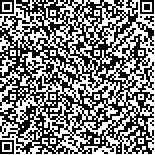蔡磊,黎清波,周传坤,等.脉冲电磁场对沉默腺苷受体2A介导的退变髓核细胞炎症的影响及机制研究[J].中华物理医学与康复杂志,2025,47(9):769-775
扫码阅读全文

|
| 脉冲电磁场对沉默腺苷受体2A介导的退变髓核细胞炎症的影响及机制研究 |
|
| |
| DOI:10.3760/cma.j.cn421666-20250404-00299 |
| 中文关键词: 脉冲电磁场 A2A腺苷受体 NF-κB信号通路 椎间盘退行性病变 |
| 英文关键词: Pulsed electromagnetic field stimulation A2A adenosine receptors NF-κB signaling Intervertebral disc degeneration |
| 基金项目:湖北省自然科学基金面上项目(2021CFB522);武汉市卫生健康委项目(WX23Z06) |
|
| 摘要点击次数: 614 |
| 全文下载次数: 423 |
| 中文摘要: |
| 目的 观察脉冲电磁场(PEMF)对沉默腺苷受体2A(A2AR)介导的退变髓核细胞炎症的调控作用。 方法 培养大鼠原代髓核细胞并分为对照组、模型组、A2AR-小干扰RNA组(A2AR-siRNA组)及PEMF组。对照组给予磷酸盐缓冲液(PBS)处理,模型组给予肿瘤坏死因子-α (TNF-α)刺激处理,A2AR-siRNA组及PEMF组给予转染A2AR-siRNA处理(沉默A2AR),待转染完成后再给予TNF-α刺激处理,PEMF组于TNF-α刺激24 h内再辅以PEMF干预,暴磁时间为4 h/d。待干预2 d后采用CCK8法检测各组细胞增殖情况,采用免疫荧光染色检测髓核细胞A2AR阳性表达,采用蛋白免疫印迹法(WB)或实时荧光定量聚合酶链反应(RT-qPCR)检测髓核细胞A2AR、环磷酸腺苷(cAMP)、蛋白激酶A(PKA)、环磷腺苷效应元件结合蛋白(CREB)、核因子-κB(NF-κB)、核苷酸结合寡聚化结构域样受体蛋白3(NLRP3)及白细胞介素-6(IL-6)表达水平。 结果 模型组细胞增殖率为60%,较对照组(100%)显著降低(P<0.05),A2AR-siRNA组细胞增殖率(34%)较模型组进一步下降(P<0.05),PEMF组细胞增殖率(80%)较模型组及A2AR-siRNA组均显著升高(P<0.05)。与对照组比较,模型组髓核细胞A2AR阳性表达有所增加,且A2AR蛋白及mRNA表达应激性升高(P<0.05);A2AR-siRNA组和PEMF组A2AR蛋白及mRNA表达均显著低于模型组(P<0.05)。与对照组比较,模型组髓核细胞cAMP水平显著降低(P<0.05),A2AR-siRNA组cAMP含量较模型组进一步降低(P<0.05),PEMF组cAMP含量较模型组及A2AR-siRNA组均显著增加(P<0.05)。模型组PKA、CREB表达明显高于对照组水平(P<0.05), A2AR-siRNA组PKA、CREB表达较模型组显著降低(P<0.05),PEMF组PKA、CREB蛋白表达较A2AR-siRNA组略有回升,但差异无统计学意义(P>0.05)。模型组髓核细胞NF-κB、NLRP3、IL-6蛋白及mRNA表达均较对照组显著升高(P<0.05),A2AR-siRNA组上述指标较模型组进一步增加(P<0.05),PEMF组NF-κB、NLRP3、IL-6蛋白及mRNA表达较模型组和A2AR-siRNA组均显著降低(P<0.05)。 结论 下调A2AR含量会进一步加剧退变髓核细胞炎症损伤,其机制可能与下调CREB活性,激活NF-κB信号通路,进而促进炎症因子NLRP3、IL-6表达上调有关;给予PEMF干预不能显著上调退变髓核细胞A2AR含量,但可促进cAMP表达,抑制下游NF-κB信号通路进而发挥抗炎作用。 |
| 英文摘要: |
| Objective To observe any ability of pulsed electromagnetic field (PEMF) stimulation to regulate inflammation in degenerate nucleus pulposus cells. Methods Primary nucleus pulposus cells from rats were cultured and divided into a control group, a model group, an A2AR-small interfering RNA group (A2AR-siRNA group), and a PEMF group. The control and model group cells were stimulated with tumor necrosis factor-α (TNF-α) in phosphate-buffered saline solution, those in the A2AR-siRNA and the PEMF groups were transfected with A2AR siRNA and given TNF-α stimulation. The PEMF group cells had four hours daily of PEMF irradiation beginning within 24 hours after the TNF-α stimulation for 2 days. After 48 hours, cell proliferation was detected by CCK8 assay, while the positive expression of A2AR in the nucleus pulposus cells was measured using immunofluorescence staining. The expression of A2AR, cyclic adenosine monophosphate (cAMP), protein kinase A (PKA), cAMP response element binding protein (CREB), nuclear factor-κB (NF-κB), nucleotide-binding oligomerization domain-like receptor protein 3 (NLRP3), and interleukin-6 (IL-6) in the cells was observed using western blotting and real-time fluorescence quantitative polymerase chain reactions. Results The rate of cell proliferation among the model group was approximately 60%, significantly lower than that of the control group (100%), but significantly higher than that of the A2AR-siRNA group (approximately 34%). The cell proliferation rate of the PEMF group was approximately 80%, significantly higher than that of the model and A2AR-siRNA groups. Compared with the control group, the positive expression of A2AR in the nucleus pulposus cells, A2AR protein and mRNA in the model group increased significantly in response to stress. The expression of A2AR protein and mRNA in the A2AR-siRNA group and the PEMF group was significantly lower than in the model group. Compared with the control group, the cAMP level in the nucleus pulposus cells of the model group had decreased significantly. The cAMP content in the A2AR-siRNA group further decreased compared with the model group, and that in the PEMF group increased compared with the model and the A2AR-siRNA groups. The average expression of PKA and CREB in the model group was significantly higher than among the control group, while that of PKA and CREB in the A2AR-siRNA group was significantly lower. The PKA and CREB protein levels in the PEMF group were slightly higher than in the A2AR-siRNA group, but the difference was not statistically significant. The expression of NF-κB, NLRP3, and IL-6 protein and mRNA in the cells of the model group was significantly higher than in the control group, but those of the A2AR-siRNA group were significantly higher than in the model group. The levels in the PEMF group were significantly lower than among the model and A2AR-siRNA groups, on average. Conclusions Down-regulation of A2AR content further aggravates the inflammatory injury of degenerated nucleus pulposus cells. The mechanism may be related to the down-regulation of CREB activity, activation of the NF-κB signaling pathway, and subsequent up-regulation of inflammatory factors NLRP3 and IL-6. PEMF stimulation cannot significantly increase the A2AR level in degenerated nucleus pulposus cells, but it can promote the expression of cAMP and inhibit the downstream NF-κB signaling pathway, thereby exerting an anti-inflammatory effect. |
|
查看全文
查看/发表评论 下载PDF阅读器 |
| 关闭 |
|
|
|